biodiversity exists and resists in Giverny
June 13th, 2025. Paris Saint-Lazare station. It’s my first time here, and—as usual—I arrive with my nose in the air, curious and enchanted. Truth be told, I’m always looking up: at skies, at ceilings, at arches. And then I wonder why I look so lost. But today, for once, I know exactly why. I’m about to live a dream.
I don’t love many things, but the ones I do, I love deeply. Impressionism is one of them. Claude Monet, especially. So yesterday, during a tough week in a tough season of life, I decided to do something rare: take a day for myself. A bold move for someone like me, perpetually over-connected, bound to work hours even when there’s no office to speak of.
Since it was my first time at this station, I wasn’t expecting the giant boards announcing, in deceptively simple lettering: Trains to Normandy. Somehow, it sounded both mystical and matter-of-fact—like boarding a train to Narnia, crossing into some mysterious beyond. But not too mysterious, of course: it’s a well-charted path for the brave of heart, the tourists. People like me. Brave because, despite the forecasted heatwave, we go. To Giverny. No matter what.
And that’s the destination of my dream. Isn’t it strange to be able to place a dream so precisely on a map? Usually, we dream of ideas, projects, people. But not this time.
In Giverny lies what I like to call a temple: Monet’s house. What makes it sacred isn’t just its peace and quiet. It’s the unmistakable sense of being in a place that transcends time. Monet didn’t just live here, he envisioned it, chose it, built it, shaped it, loved it in every minute detail. Walking through the rooms, wandering in the gardens, I could feel that care seep into my skin, cling to me like perfume.
I wasn’t expecting much, honestly. Hordes of tourists tend to dull the magic. I’ve often left museums with a bitter taste, disheartened by the overconsumption of beauty.
But in Giverny, I fell in love.
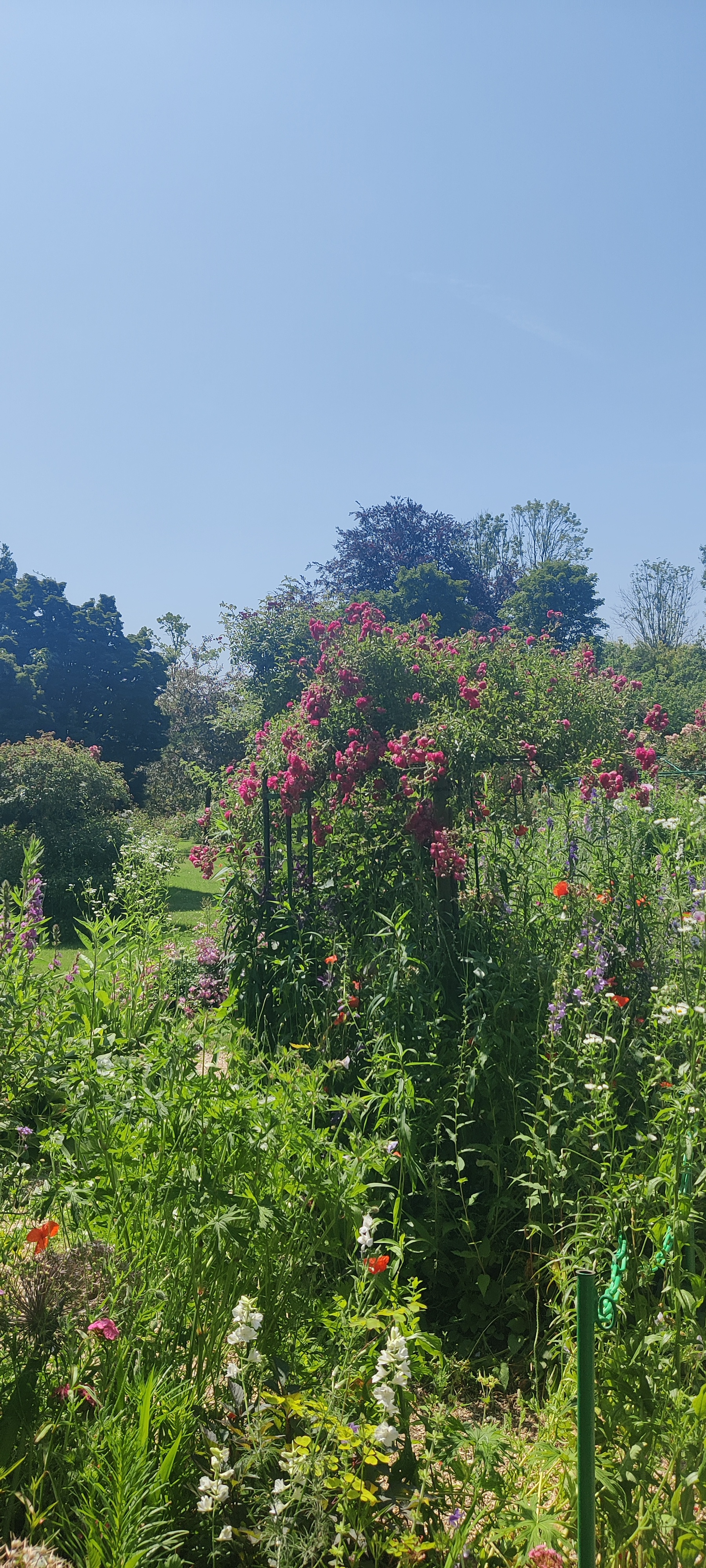
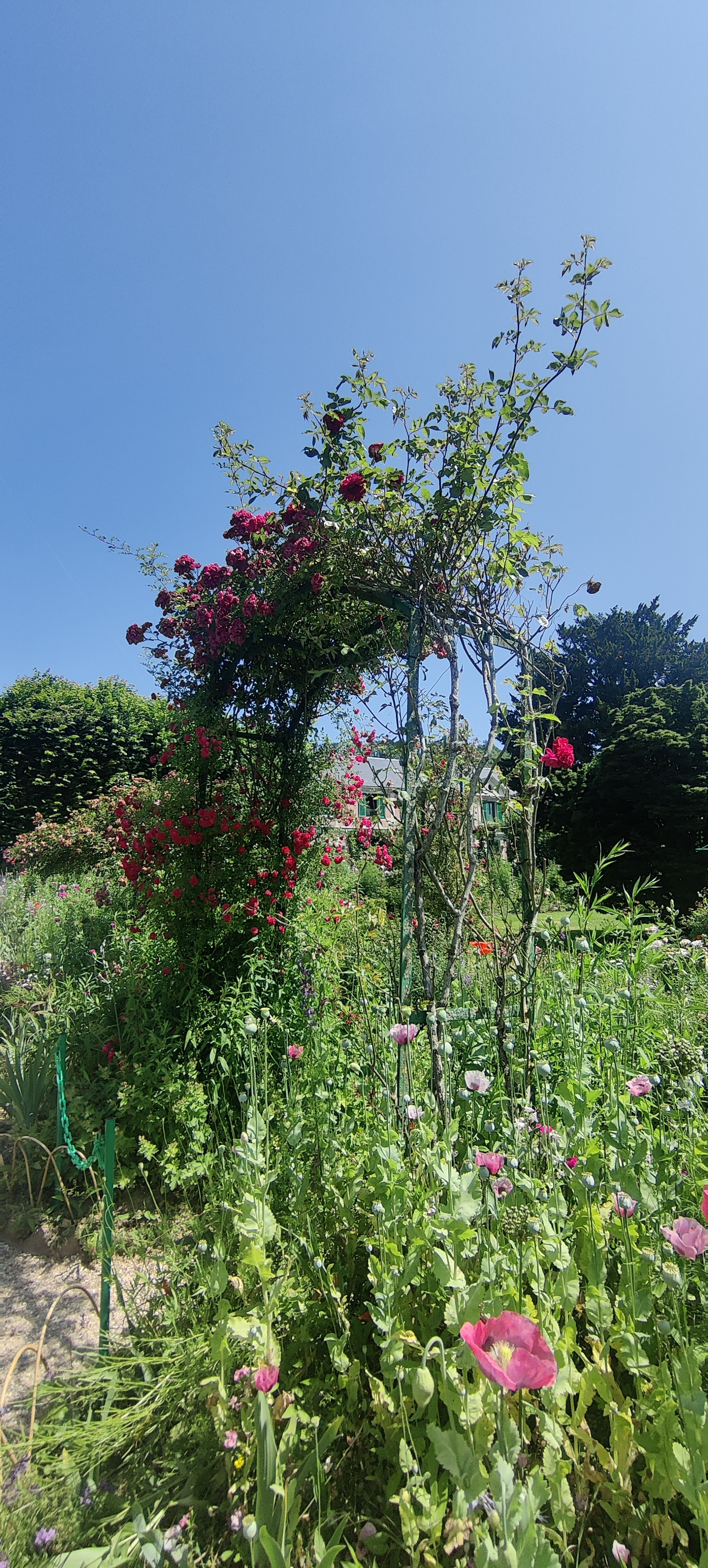

I captured endless landscapes with my eyes, etched them in my mind. Rarely have I seen nature so lush, so overflowing with life and biodiversity. This wasn’t a manicured lawn with neatly trimmed flowerbeds. It was intentional wildness. Thoughtful chaos. A garden that was allowed to evolve, to express itself freely.
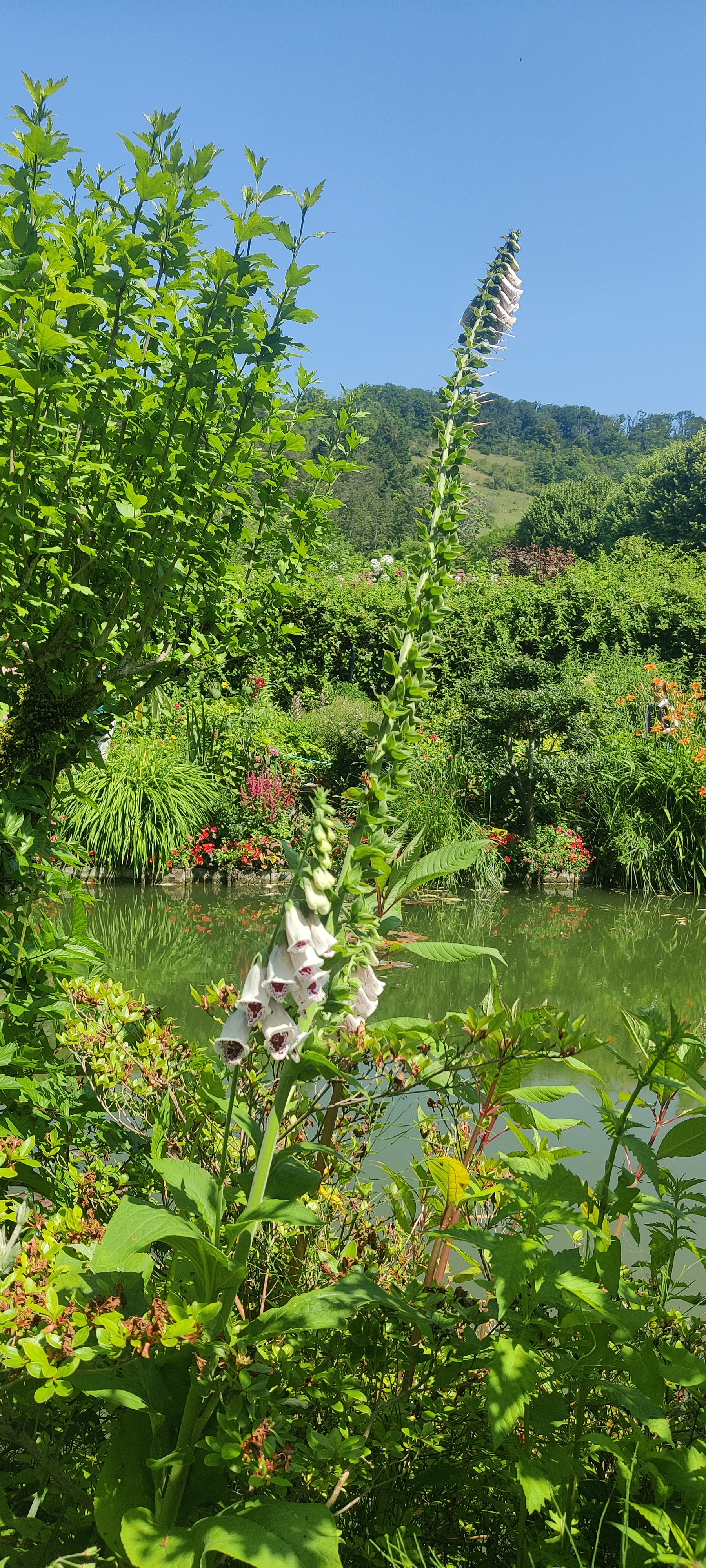
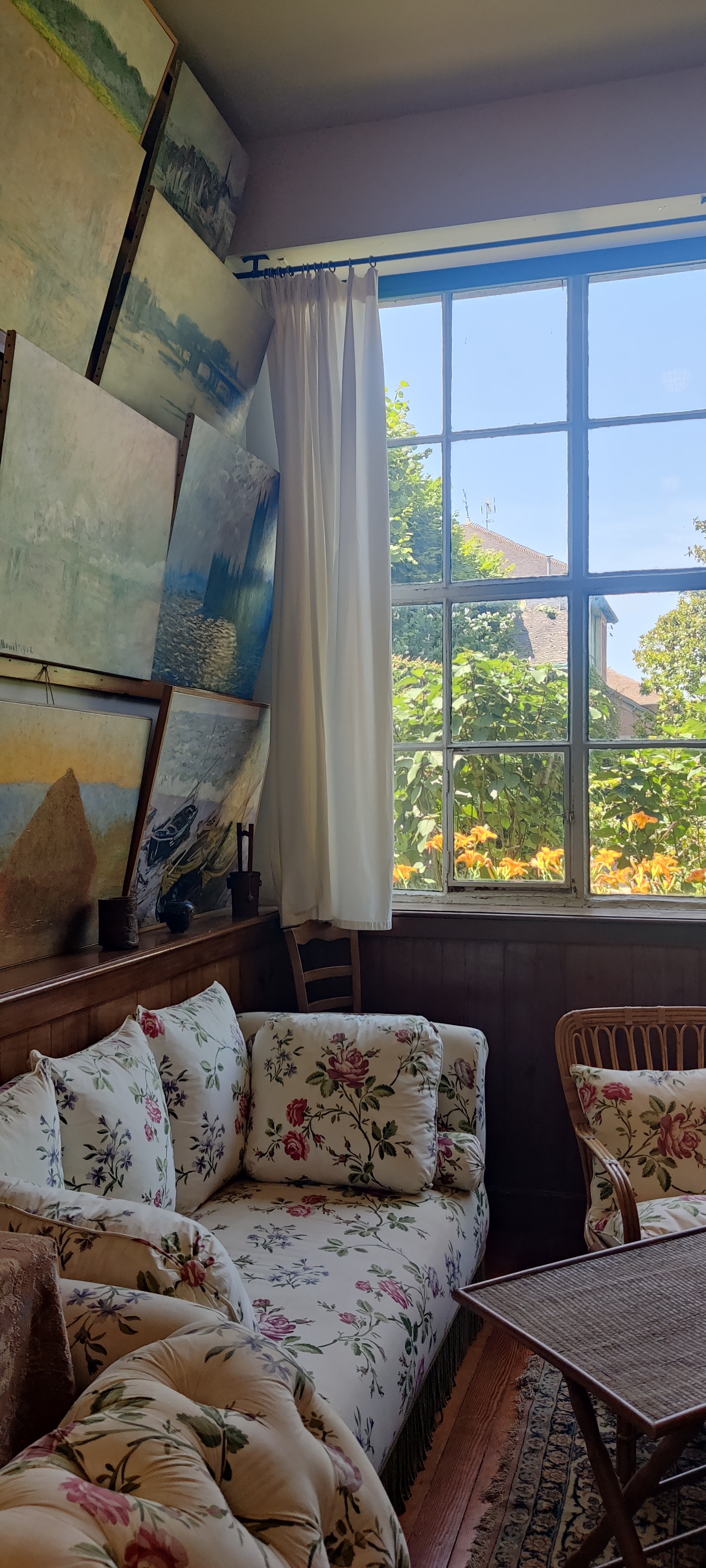
And maybe that’s the secret behind Monet’s paintings. I found myself, unexpectedly, falling a little more in love with life itself.
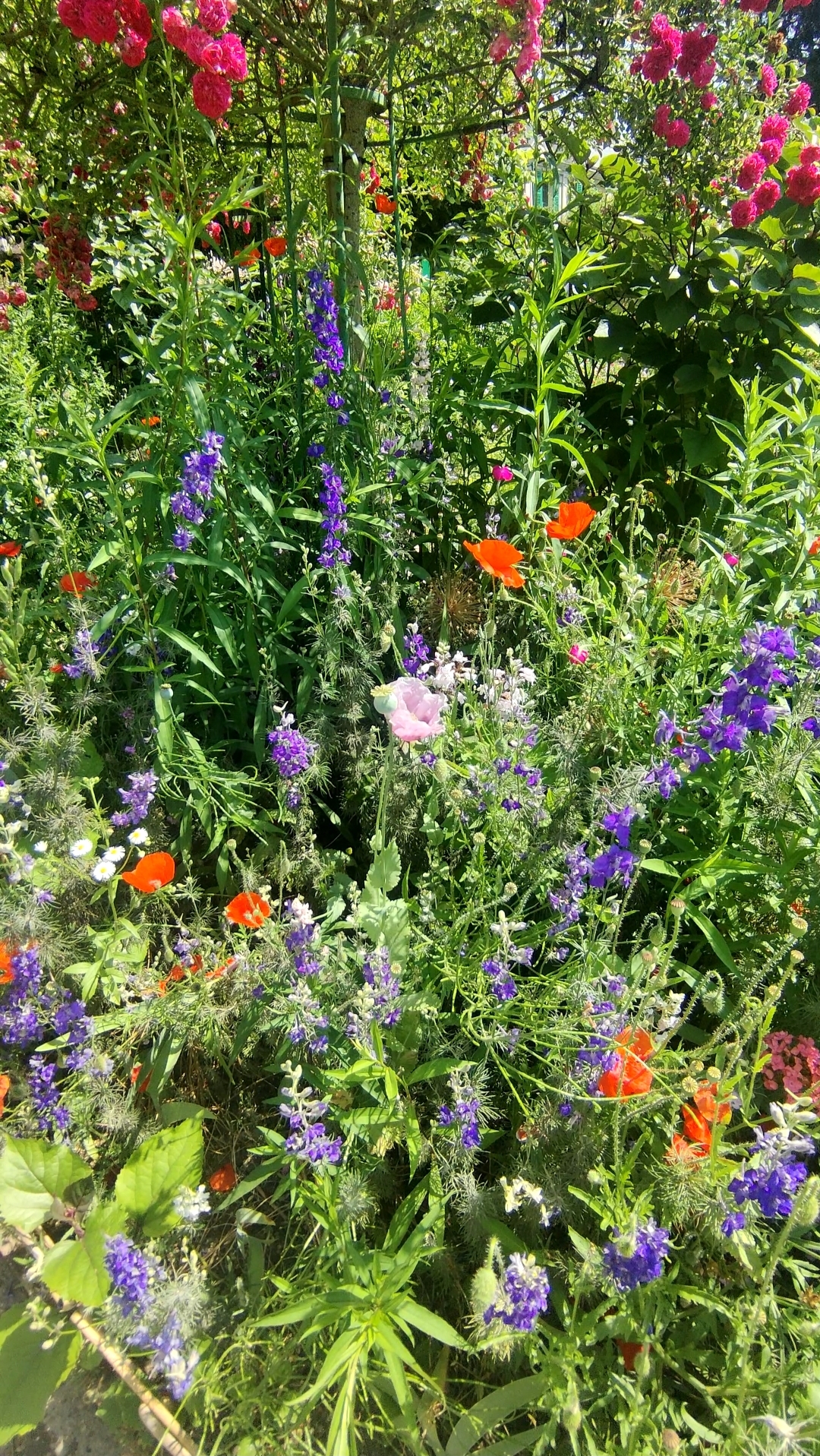
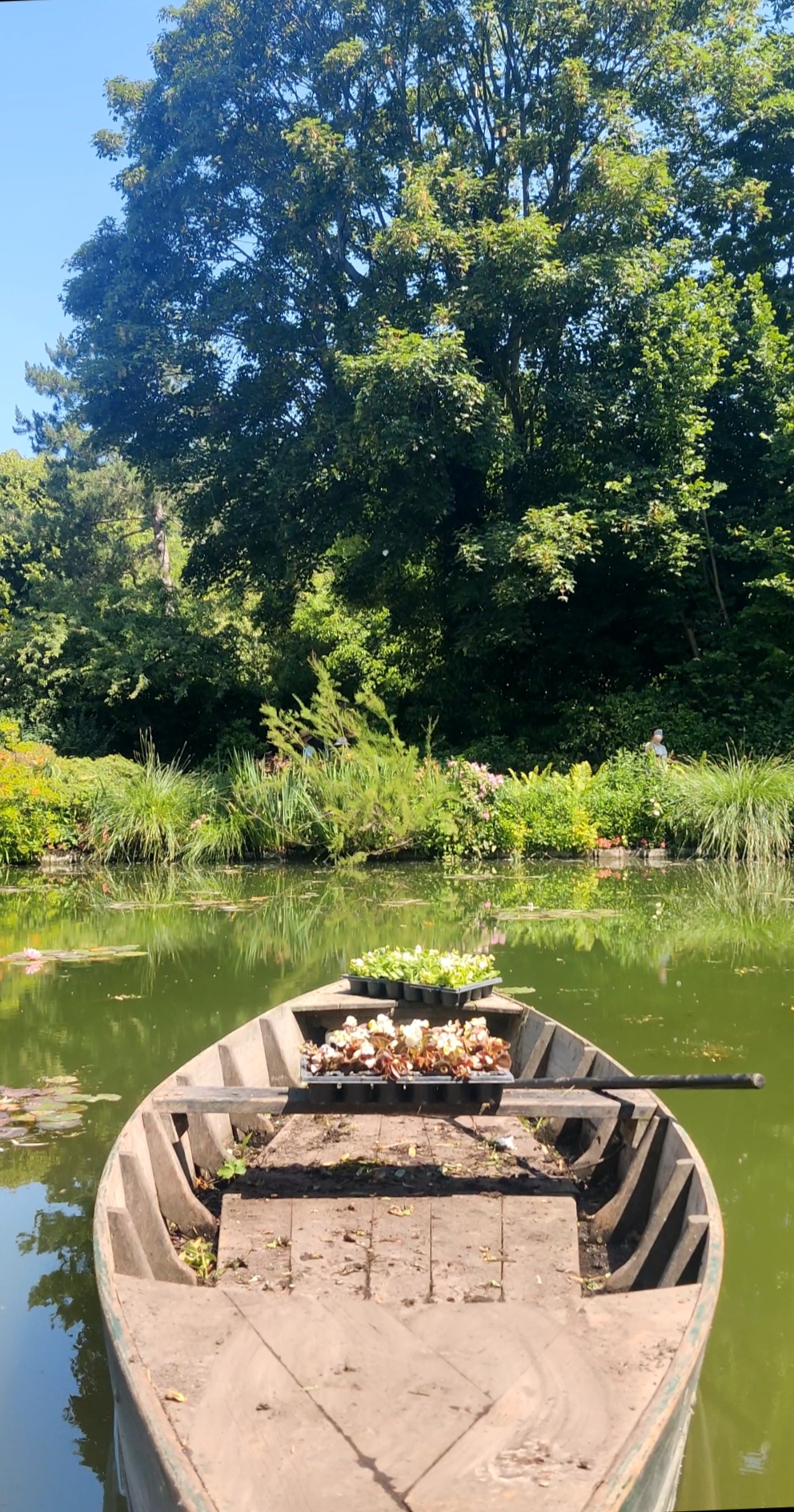
All throughout my visit, I was awestruck by the variety of plants and tiny creatures I saw. And I couldn’t help but think about the state of our planet today—how fragile this biodiversity is, and how quickly we’re losing it.
Deforestation, pollution, climate change—all driven by human hands—are already putting entire ecosystems at serious risk. And we’re part of those ecosystems, whether we like it or not.
Human activity has already altered over 70 per cent of all ice-free land. When land is converted for agriculture, some animal and plant species may lose their habitat and face extinction. This has important regional variations, as the picture below shows.
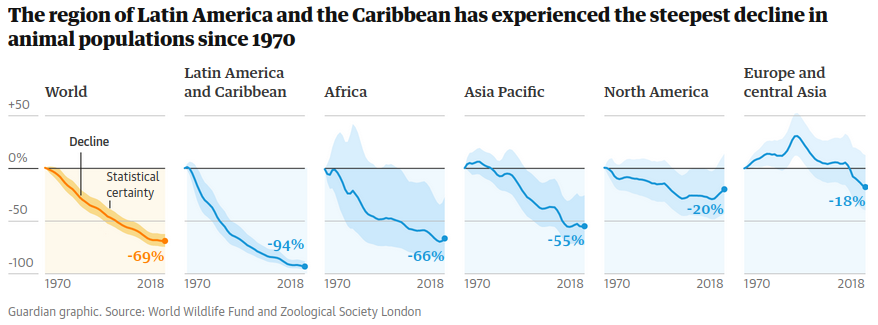
Climate change has altered marine, terrestrial, and freshwater ecosystems around the world. It has caused the loss of local species, increased diseases, and driven mass mortality of plants and animals, resulting in the first climate-driven extinctions.
On land, higher temperatures have forced animals and plants to move to higher elevations or higher latitudes, many moving towards the Earth’s poles, with far-reaching consequences for ecosystems. The risk of species extinction increases with every degree of warming.
All the other species can live without us, the humans. It is us, the humans, who will not survive without any of them.

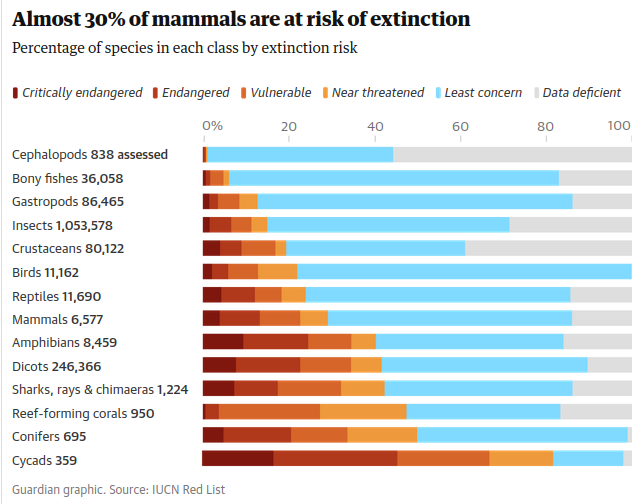
Sources:
https://www.theguardian.com/environment/2022/dec/06/the-biodiversity-crisis-in-numbers-a-visual-guide-aoe
https://www.weforum.org/stories/2022/10/nature-loss-biodiversity-wwf/
https://www.un.org/en/climatechange/science/climate-issues/biodiversity
Enjoy Reading This Article?
Here are some more articles you might like to read next: